HashiCorp Certified: Vault Associate Certification
Vault Replication
Replication Architecture
Vault supports two replication modes—performance and disaster recovery (DR)—to scale reads and provide robust failover. In this guide, we’ll cover:
- Conceptual overview
- Reference topologies (cloud & on-premises)
- Networking requirements
Performance vs. DR Replication
Vault replication modes at a glance:
| Mode | Use Case | What Replicates | Promotion Behavior |
|---|---|---|---|
| Performance | Scale reads, reduce latency in local sites | Data (secrets, configs) | N/A |
| Disaster Recovery | Failover with token and lease preservation | Data + Tokens (from any cluster tier) | DR replica becomes new primary on promotion |
Token Behavior
- Tokens created on a primary or performance cluster replicate only to their DR cluster.
- Performance secondaries never receive tokens directly from the primary.
- Promoting a DR cluster restores all tokens and leases for uninterrupted operation.
Clients always connect to their local cluster for both reads and writes. On failure, you promote the regional DR to primary.
Example: Two Data Centers
Imagine two sites, A and B, each with primary, performance, and DR replicas:
- Primary in Data Center A
- Performance Replica in Data Center B
- DR Replica for Primary in Data Center A
- DR Replica for Performance in Data Center B
Flow:
- Clients in A → Primary; Clients in B → Performance Replica
- Primary → Performance Replica (data only)
- Primary & Performance → their DR clusters (data + tokens)
- On outage, promote the corresponding DR to restore service
AWS Regional Replication
A common AWS pattern spans two regions, each with local DR:
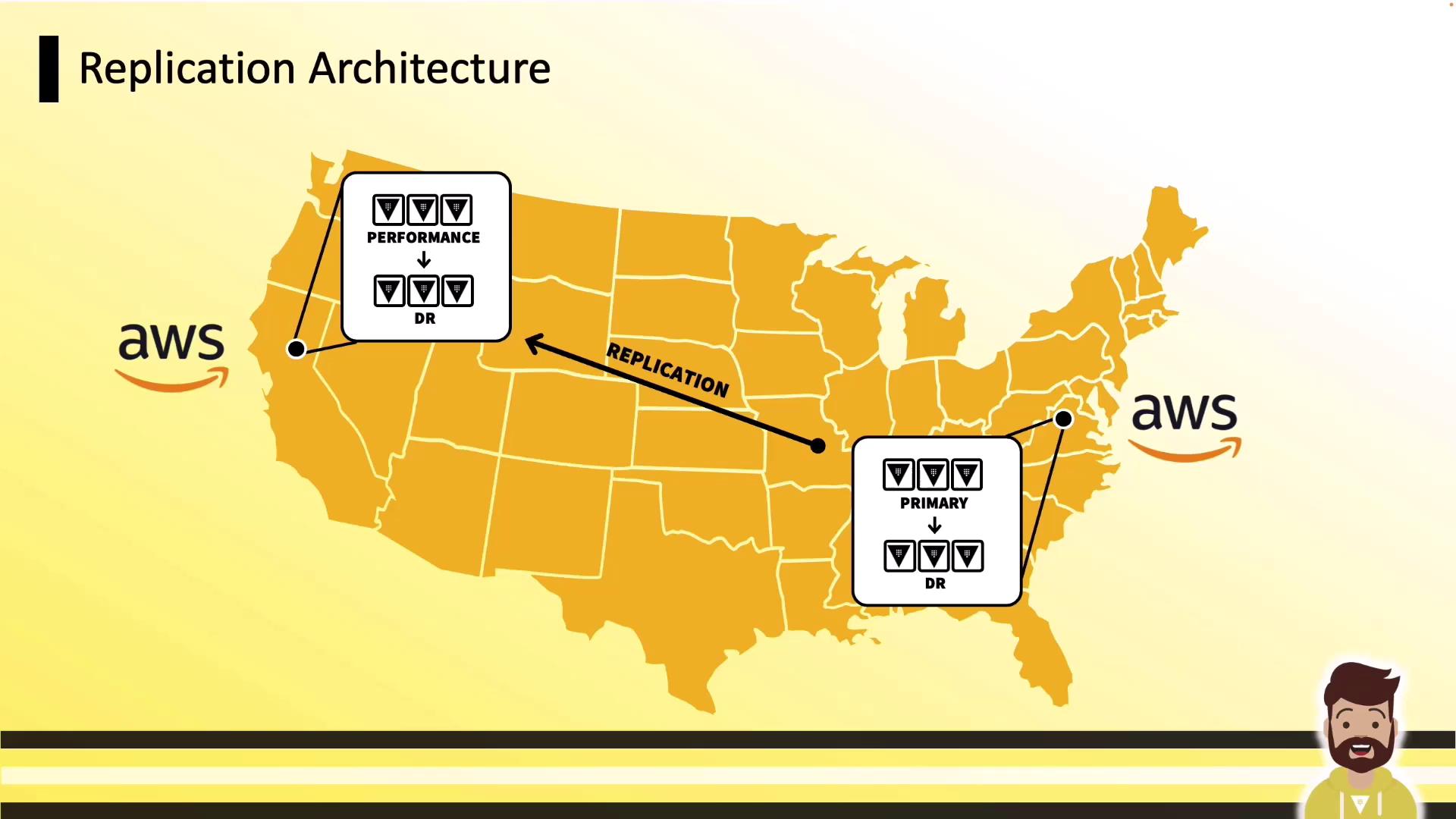
- us-east-1: Primary + DR
- us-west-1: Performance Replica + DR
Global Deployment
For global scale, replicate from one primary to multiple regions, each with its own DR:
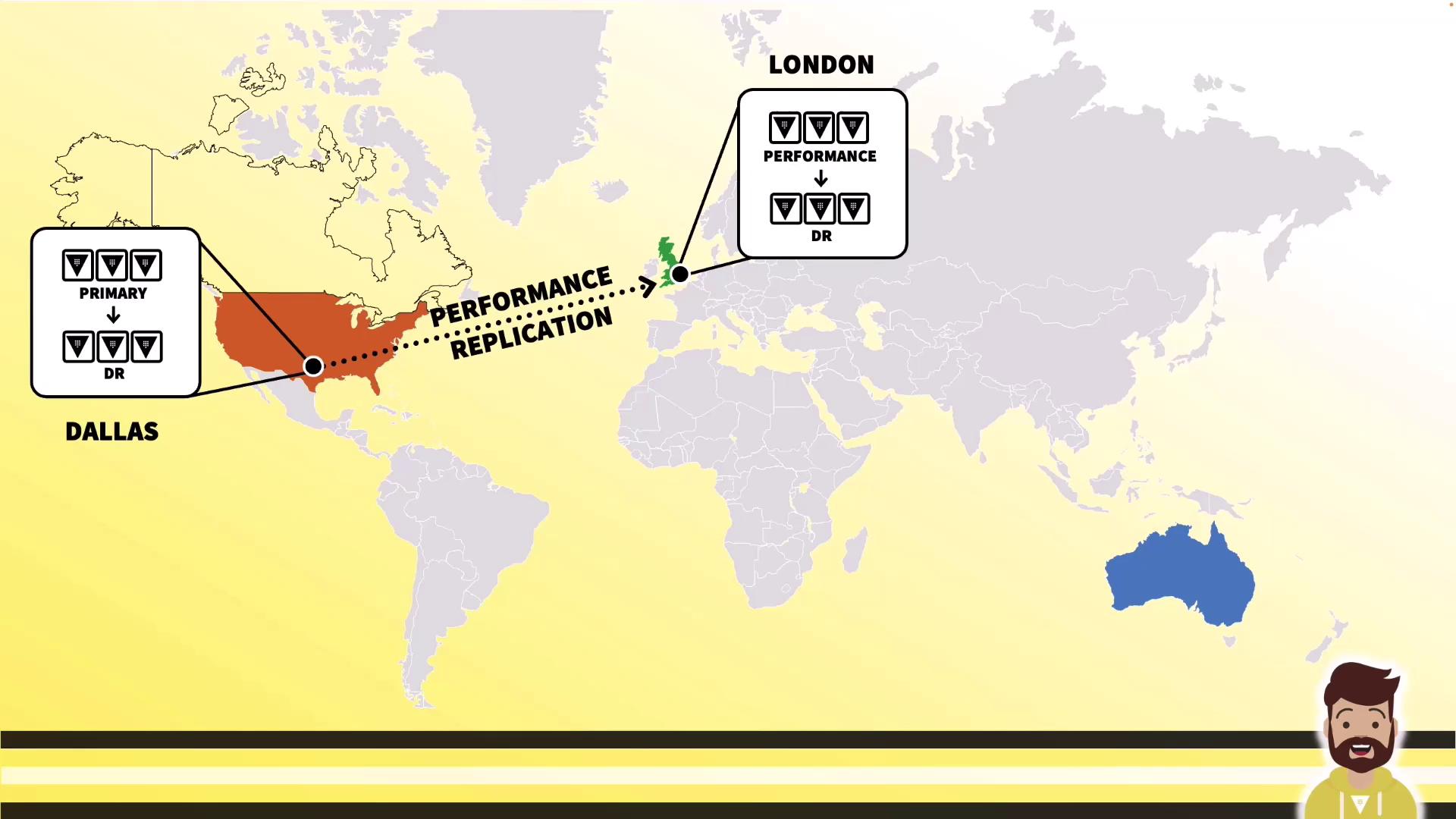
Start with Dallas → London (with DR):
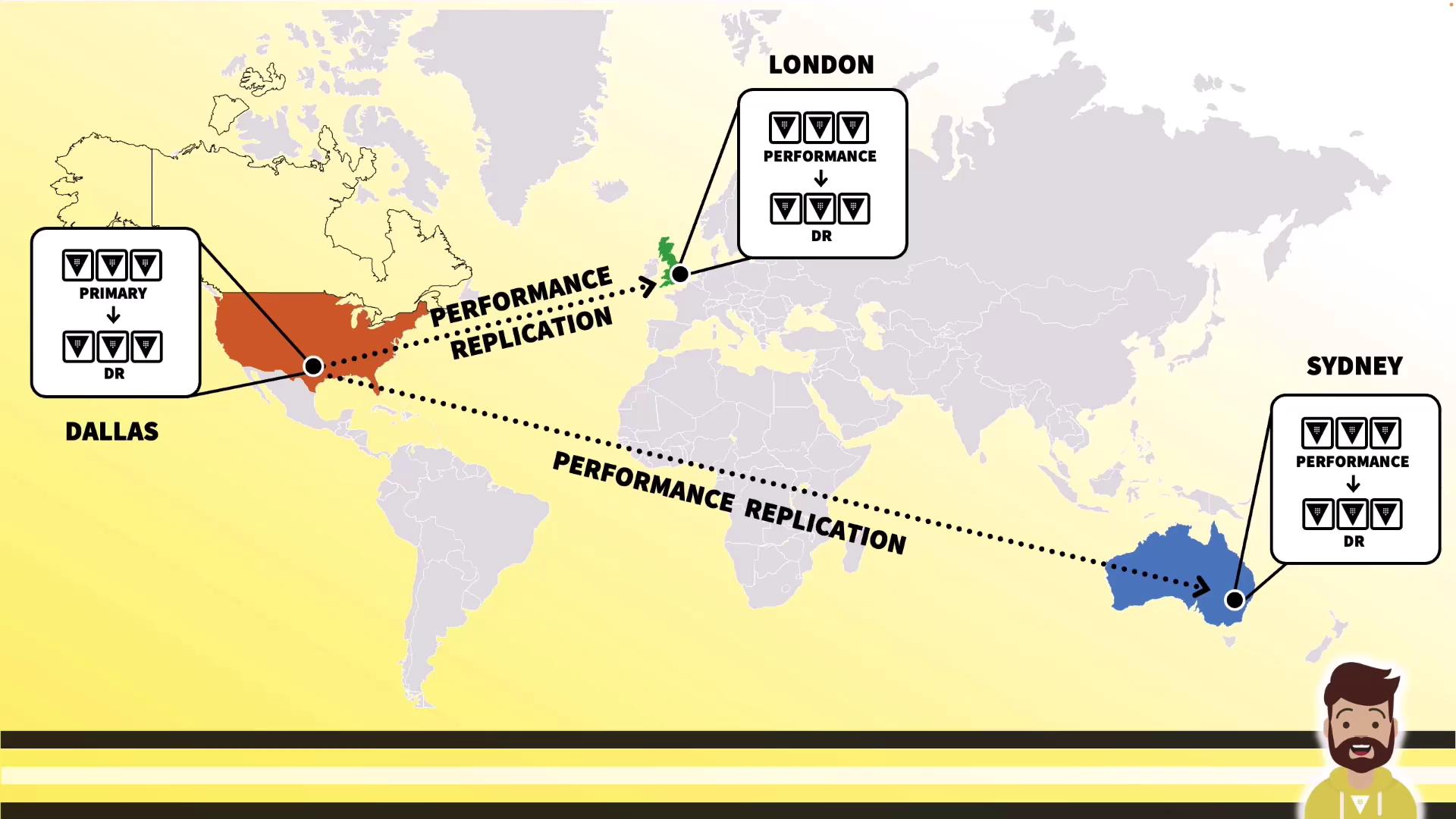
Extend further to Sydney, maintaining consistent policies, auth methods, secrets engines, and configurations across all clusters.
Real-World On-Premises Examples
Customer A: VMware Active-Active
High-availability with VMware clusters across two data centers:
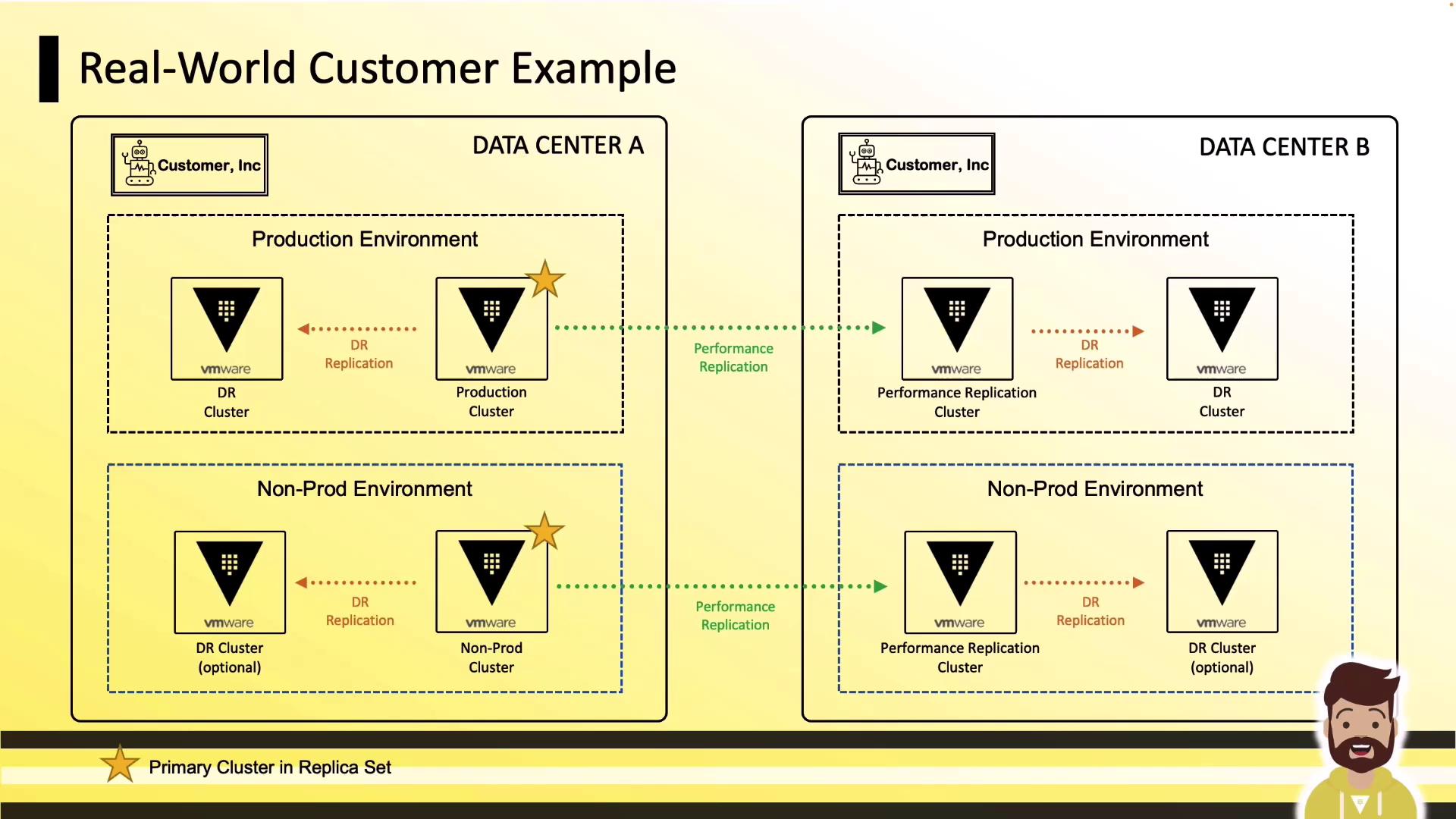
- Production DC A: Primary + DR
- Production DC B: Performance Replica + DR
- Non-Prod: QA and sandbox mirrors for testing
Customer B: On-Premises to AWS
Hybrid topology connecting on-premises primary to AWS:
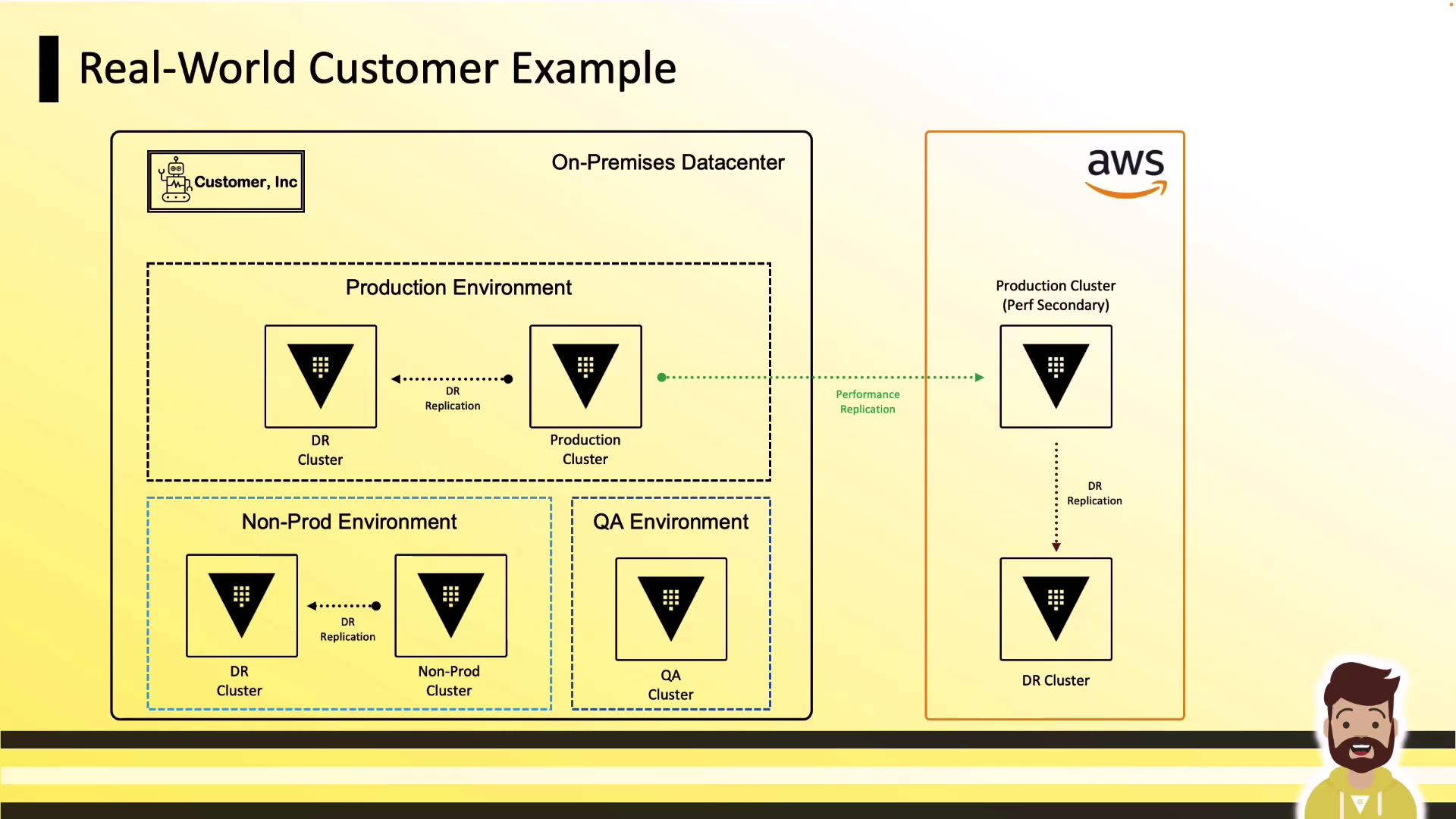
- On-Prem Production: Primary + DR
- AWS: Performance Replica + DR
- Non-Prod & QA: Separate clusters for dev and testing
Networking Requirements
Replicating Vault clusters requires simple connectivity and DNS resolution:
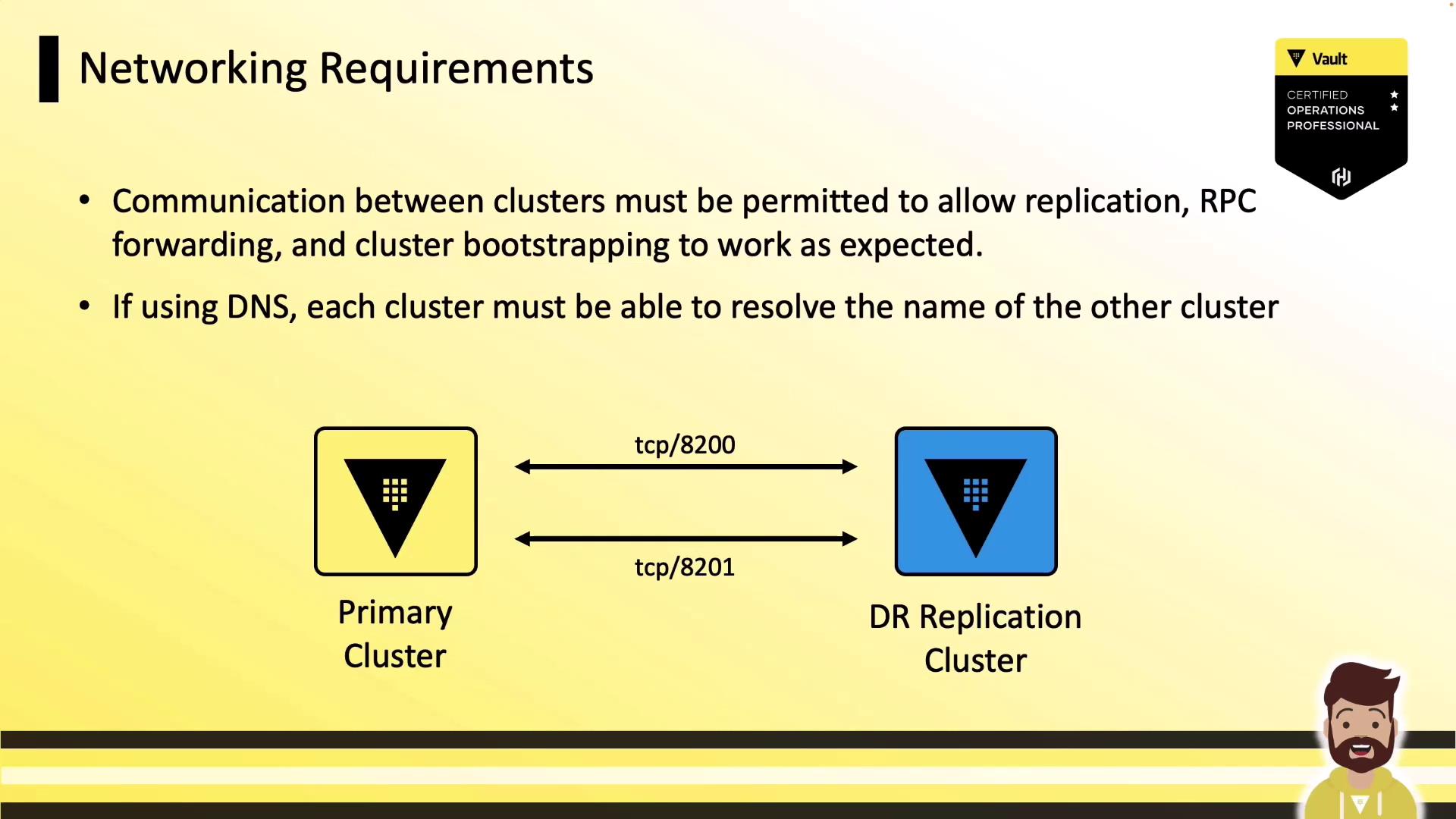
Network Security
- Open TCP 8200 and 8201 bi-directionally between clusters.
- Restrict access using firewalls or security groups.
- Ensure each cluster can resolve its peers’ DNS names.
Port Reference
| Source | Destination | Port | Protocol | Direction | Purpose |
|---|---|---|---|---|---|
| Vault → Vault (bootstrapping) | Peer Vault clusters | 8200 | TCP | Bi-directional | Cluster bootstrap |
| Vault → Vault (replication) | Peer Vault clusters | 8201 | TCP | Bi-directional | Data & RPC forwarding |
| Client → Load Balancer | Vault API endpoint | 8200 | TCP | Inbound | Client operations |
| Load Balancer → Vault | Vault API servers | 8200 | TCP | Internal | Load balanced traffic |
| Vault → External Services | Database secrets engines, etc. | varies | TCP | Outbound | Secrets engine access |
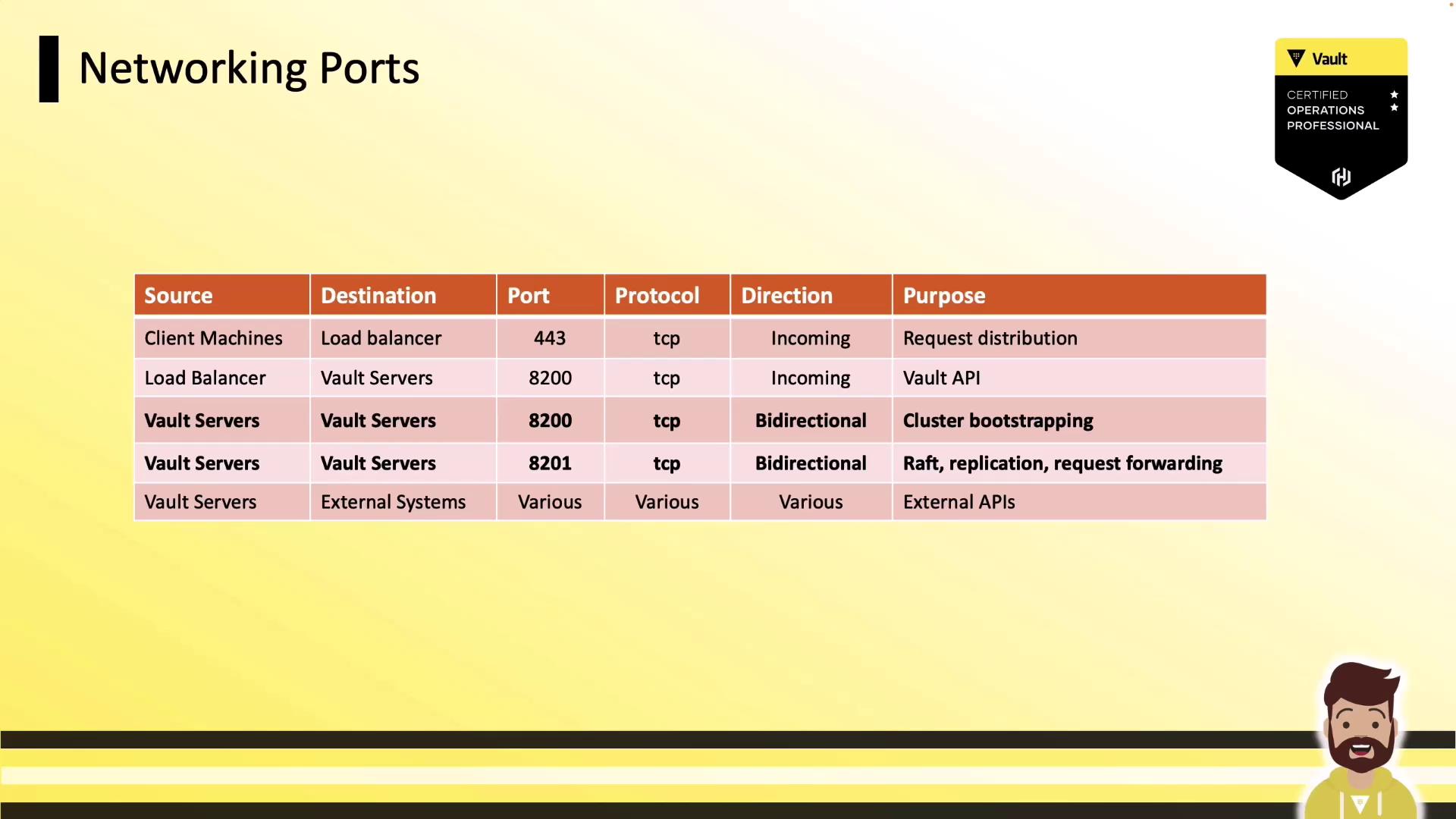
Links and References
Watch Video
Watch video content